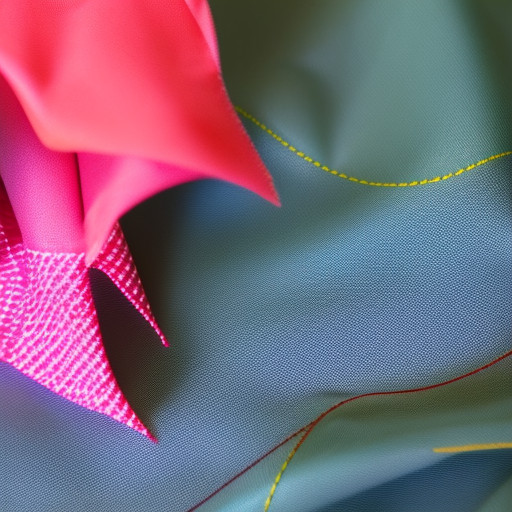Mastering sewing techniques can help you create beautiful, well-fitting garments and unleash your creativity. Whether you’re a beginner or an experienced sewist, understanding these fundamental techniques will enhance your sewing skills and ensure professional-looking results.
1. Seam Finishing
Seam finishing prevents fabric edges from fraying and adds durability to your garments. Some popular seam finishing techniques include:
- Zigzag stitch: Overlock the fabric edges with a zigzag stitch to prevent fraying.
- French seam: Ideal for lightweight fabrics, the French seam encloses raw edges within the seam for a clean and neat finish.
- Overlocking: Utilize an overlocker/serger machine to trim and encase fabric edges simultaneously.

2. Gathering
Gathering is a technique used to create controlled folds in fabric, adding fullness and shape to your garment. Here’s how to create gathers:
- Set your machine to its longest straight stitch.
- Stitch two parallel lines within the seam allowance where you want the gather.
- Hold one thread tail and gently push the fabric along the threads’ length to create even gathers.
- Adjust the gathers to match the desired length and pin in place.

3. Hemming
Neatly finishing the bottom edges of your garments with a hem is essential for a polished look. Common hemming techniques include:
- Single-fold hem: Fold the raw edge once and press. Stitch the folded edge in place.
- Blind hem: A nearly invisible hem on the outside of the fabric. Stitch small “bites” of fabric while catching a small portion of the folded hem.
- Double-fold hem: Fold the raw edge twice, creating a clean finish on both the raw edge and the top visible edge.

4. Buttonholes
Buttonholes are essential when adding closures to your garments. Modern sewing machines often include an automatic buttonhole feature, but learning to manually sew buttonholes is also valuable. Follow these general steps:
- Mark the buttonhole placement and size on your fabric.
- Create a sturdy base by sewing a rectangle or bar tack at both ends of the buttonhole area.
- Set your machine to the buttonhole stitch and sew along the marked line.
- Carefully open the buttonhole using a seam ripper or small scissors.

5. Finishing Edges
Finishing edges prevents fraying and adds a professional touch to your garments. Consider the following techniques:
- Picot edge: Fold a narrow edge twice, encasing the raw edge, and stitch along the fold.
- Bound edge: Sew bias tape or fabric strips along the raw edge to enclose and reinforce it.
- Hong Kong finish: Apply bias tape to the raw edge, enclosing it completely for a clean and decorative finish.

Remember, practice makes perfect! Experiment with different sewing techniques and adapt them to suit your projects. With time and patience, you’ll soon be sewing beautiful, professional-looking clothes.




